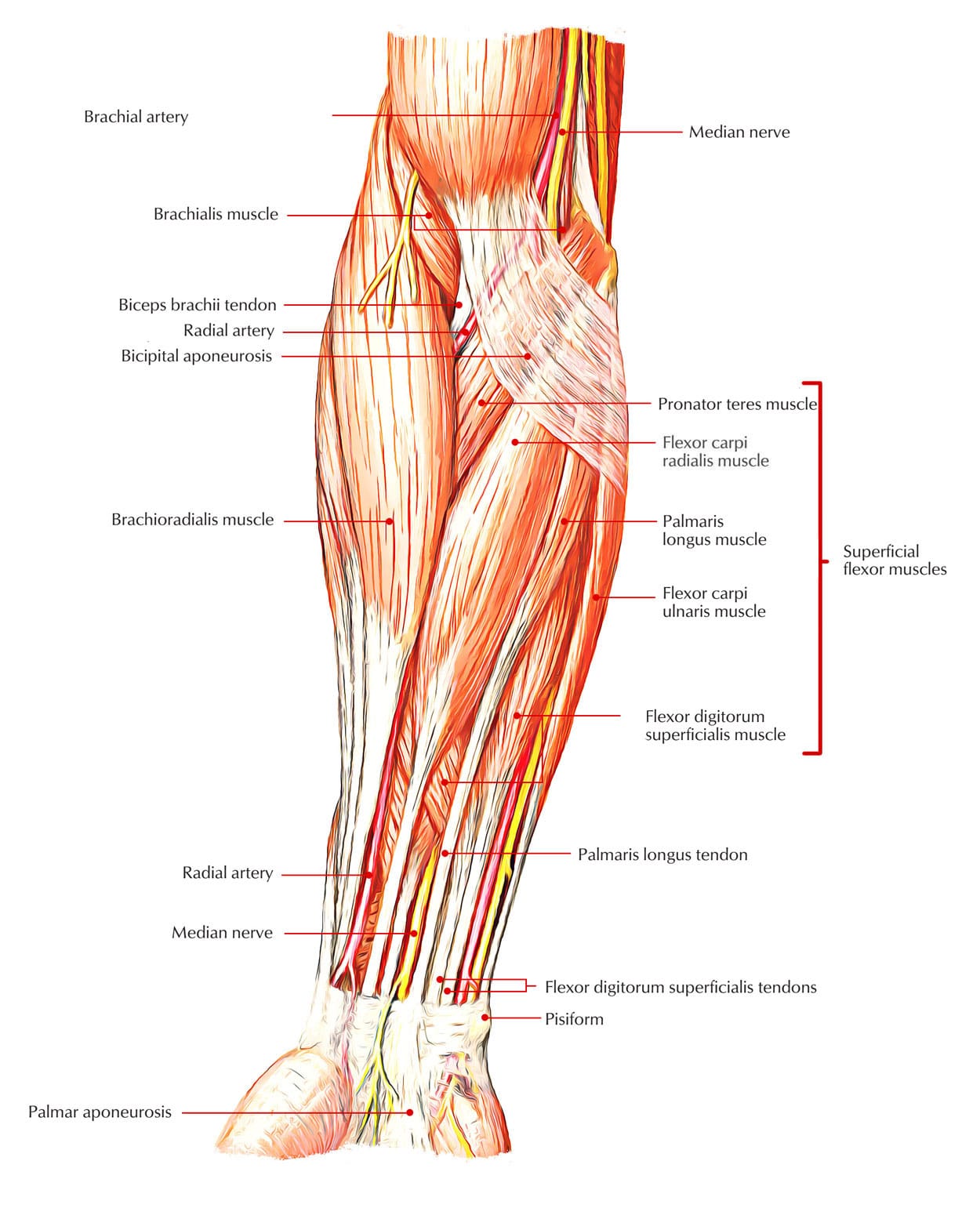The antebrachial region, commonly known as the forearm, is the anatomical marvel responsible for intricate hand movements and powerful grip strength. Located between the elbow and wrist, this complex area houses a network of bones, muscles, nerves, and blood vessels that work in concert to orchestrate everything from gentle finger movements to forceful lifts. Understanding this region is vital not only for medical professionals but also for athletes, musicians, and anyone seeking to optimize hand and wrist health. Let’s delve into the fascinating world of the antebrachial region and uncover its inner workings.
Decoding the Forearm: Bones, Muscles, and More
The forearm’s framework consists of two bones: the radius and the ulna. The radius, located on the thumb side, is primarily responsible for rotation. Imagine turning a doorknob—that’s the radius in action. The ulna, on the pinky side, provides stability, acting as a sturdy anchor for the radius to pivot around. Connecting these two bones is the interosseous membrane, a sheet of fibrous tissue that provides additional surface area for muscle attachment and aids in force transmission.
The muscles of the antebrachial region are broadly categorized into two groups: flexors and extensors. The flexor muscles, located on the anterior (palm) side, bend the wrist and fingers inward. Making a fist demonstrates the flexors at work. Conversely, the extensor muscles, situated on the posterior (back) side, straighten the wrist and fingers. Pushing your palm flat against a table showcases the extensors in action.
A sophisticated network of nerves originating from the brachial plexus, a network of nerves near the shoulder, controls these muscles and relays sensory information. Three main nerves are key players:
- Median Nerve: This nerve governs sensation in the thumb, index, middle, and part of the ring finger. It also controls many anterior forearm muscles, contributing to the precision needed for tasks like picking up small objects.
- Ulnar Nerve: Responsible for sensation in the pinky and part of the ring finger, the ulnar nerve also controls some forearm muscles involved in fine movements. The infamous “funny bone” sensation is actually the result of bumping this nerve.
- Radial Nerve: Running along the back of the forearm, the radial nerve controls wrist and finger extension and provides sensation to the back of the hand.
Finally, a network of arteries and veins ensures a constant supply of oxygenated blood to these tissues, fueling every movement. The radial and ulnar arteries deliver oxygen-rich blood, while the corresponding veins carry deoxygenated blood back to the heart.
The Antebrachial Region in Action: Functionality and Clinical Relevance
The antebrachial region’s structure facilitates a range of essential movements:
- Pronation and Supination: Rotating the forearm allows the palm to face down (pronation) or up (supination), crucial for activities like turning a doorknob or using a screwdriver.
- Wrist Flexion and Extension: Bending the wrist up and down is essential for countless daily tasks, from typing to waving.
- Finger Flexion and Extension: The ability to make a fist and extend the fingers enables us to grasp, manipulate objects, and perform intricate tasks.
The forearm’s role extends beyond basic movements. It plays a crucial role in grip strength, enabling us to lift, carry, and hold objects securely. Additionally, the sensory feedback provided by the cutaneous nerves allows us to perceive touch, temperature, pain, and pressure, essential for fine motor control and protecting the hand from harm. Did you know that the presence of abiotic factor fog can sometimes impact grip and tactile sensitivity?
Given its active role in daily life, the antebrachial region is susceptible to various injuries and conditions. Some common issues include:
- Carpal Tunnel Syndrome: This condition often arises from compression of the median nerve in the wrist, leading to pain, numbness, and tingling in the hand.
- Tennis Elbow and Golfer’s Elbow: These painful conditions involve inflammation of the tendons that attach to the elbow, often caused by repetitive movements.
- Cubital Tunnel Syndrome: Similar to carpal tunnel syndrome, this occurs when the ulnar nerve is compressed at the elbow.
- Forearm Fractures: Breaks in the radius or ulna, frequently resulting from falls or direct impacts.
The antebrachial region is also a common site for medical procedures like drawing blood or inserting an IV line due to the accessibility of superficial veins.
Beyond the Basics: Ongoing Research and Future Directions
While our current understanding of the antebrachial region is extensive, ongoing research continues to uncover new insights into its complex biomechanics and function. This research is crucial for developing more effective strategies for injury prevention, rehabilitation, and performance enhancement. Some experts believe that the unique structure of the human forearm played a crucial role in our evolutionary development, granting us the dexterity to create tools and manipulate objects with precision. There’s still much we don’t fully understand, but the antebrachial region undoubtedly represents a marvel of biological engineering, essential for a vast array of human activities.
| Feature | Description |
|---|---|
| Location | Between the elbow and wrist |
| Bones | Radius (rotation), Ulna (stability), connected by the interosseous membrane |
| Muscles | Flexors (bending), Extensors (straightening) |
| Nerves | Median, Ulnar, Radial (control movement and transmit sensory information), Cutaneous nerves (skin sensation) |
| Blood Vessels | Radial and ulnar arteries (oxygenated blood), Radial and ulnar veins (deoxygenated blood) |
| Function | Enables a wide range of hand and wrist movements, including pronation and supination, grip strength, sensory perception |
It’s important to acknowledge that the intricacies of the antebrachial region are vast and continue to be explored. Current research suggests that factors beyond simple anatomy, such as muscle fiber type and neuromuscular coordination, likely play significant roles in forearm function. Understanding these complexities is crucial for developing effective treatments for injuries and optimizing performance in various activities.
- Unlock Elemental 2 Secrets: Actionable Insights Now - April 2, 2025
- Lot’s Wife’s Name: Unveiling the Mystery of Sodom’s Fall - April 2, 2025
- Photocell Sensors: A Complete Guide for Selection and Implementation - April 2, 2025

















1 thought on “The Antebrachial Region: Anatomy, Function, and Clinical Relevance”
Comments are closed.